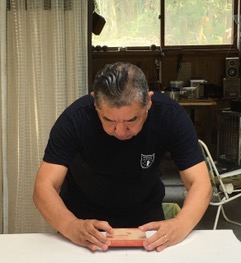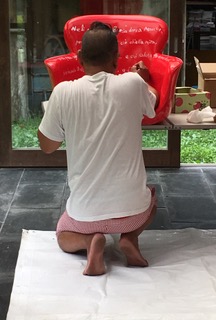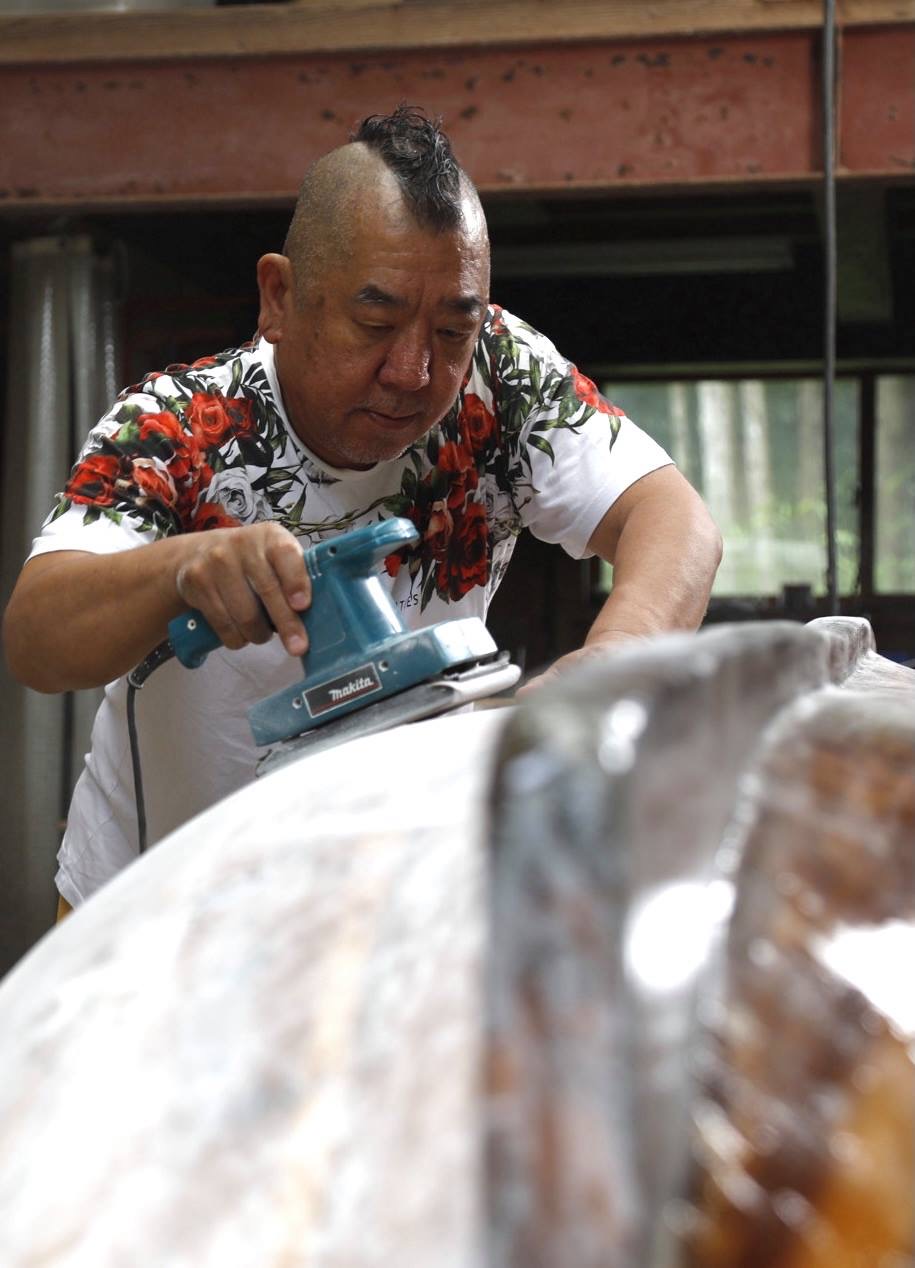
Yasuo Yoshikawa, sculptor, installation artist, and art project organizer, was born in 1959 in Otsu, Shiga Prefecture, Japan. He grew up in a family where three generations lived together and was deeply influenced by his grandfather Sekikazu Nishimura, a pastor, diplomat and human rights activist. Strongly attracted by the art of Marino Marini, at age 19 Yoshikawa left Japan, spent a year in Perugia, Italy, and then entered Geneva University of Visual Arts in 1981 where he studied sculpture under Professor Gabriel Stanulis. Some of his early artworks include Nostalgia, an outdoor installation figuring a gigantic stone lifted into the air by stainless cables stretched over a meadow. This work was realized for the group exhibition Sculpture en Plain Air 1984 in Lancy, Geneva.
After returning to Japan in 1984, Yoshikawa started teaching at Kyoto College of Art and Kyoto University of Art and Design, and initiated projects under the topic Art-Society-Environment, a theme that would be crucial in his projects throughout his artistic career. After setting up his own workshop near Lake Biwa, he created a series of works in wood and black ink. Among these was the installation The Last Supper, which was exhibited in May 1989 at galerie16 in Kyoto, followed by a related exhibition at Port Galerie Avion in Marseille, France in September 1989.
In 1990, Yoshikawa established the Biwako Artists’ Organization (BAO). With BAO, he organized two international art festivals with an emphasis on the active participation of local residents, the first on Okinoshima Island (1990), and the second in Katata (1991). In 1993, Yoshikawa initiated Art Project Z&A, through which he organized the Paris/Kyoto Art in Residence Exchange between Z&A and the Parisian art group Le Génie de la Bastille involving more than sixty artists. In 1997, he became a member of the Kyoto Art Council, a think tank for the cultural development of Kyoto City. Work he created in that period includes the series Offerings, which deals with the questions: “What kind of ‘altar’ is built and what kind of ‘offerings’ are made by contemporary society? Do we sacrifice our time, our person, our planet, or our fellow humans? Do we sacrifice them to the altar of work, of money, of society, or of ideas?” The exhibition “Offrande” (“Offering”) was held in November 1993 at gallery “Imagine” in Otsu, Shiga Prefecture.
In 1995, the disastrous Kobe Earthquake provoked a new direction in Yoshikawa’s work. After volunteering in Kobe, he decided to use his technical and social skills as a logistician for Médecins Sans Frontières (MSF), and took part in aid projects in the Caucasus (1999), in Kosovo (1999), and in Congo-Brazzaville (2000).
Back in Japan and feeling the need for a place for communication in a more and more virtual society, he created ATHA Alternative Space in the heart of Kyoto, a space to foster interest in the arts, and to encourage communication between people of all walks of life. He called this project a “social sculpture” and led ATHA during six years.
In 2008 he was invited to participate in the 2008 International Sculpture Biennale Agliè in Italy and created the installation Girovaganza Platonica (Platonic Roaming) . The installation invites the visitor to wander (girovagare) among the various -isms (ideologies) created by man, and to reflect on the power the viewpoint has on mankind’s decisions regarding nature.
In 2011 right after the Great East Japan Earthquake and Tsunami, he founded and led the organization SWTJ (Solidarity With Tohoku, Japan). The group brought material assistance and cultural events to victims of the disaster during several years. In November 2012, the “Galerie Apotheke” in Kyoto exhibited his work “La Barca della Libertà,” a work made in marble dedicated to the memory of the victims of Tohoku.
In July 2015, he held the solo exhibition “No.9” at Media Shop in Kyoto. “No.9” refers to Article 9 of the Japanese Constitution, a clause that outlaws war as a means of settling international disputes. In this artwork, Article 9 is literally “written in stone”—the text of the article is carved in various languages on stone tablets, a centuries-old way of preserving the memory of history and culture.
In September 2019, the exhibition “Dante’s Chair” at Media Shop in Kyoto, an interpretation of Dante’s novel “The New Life”, was followed by preparations for a solo exhibition in Okinawa which had to be postponed due to the pandemic.
The show “Okinawa Mon Amour” was held in November 2021 at Naha Shimin Gallery in Japan’s southernmost prefecture Okinawa. It refers to Okinawa as a symbol of a beloved fragile place that continues to exist under the swiping influence of human history and society: the installation questions the role of each human individual in their place. The show in Okinawa is followed by a related exhibition titled “Woman Crying” at Art Hall, Tennoz Office, Tokyo, in November 2022.



